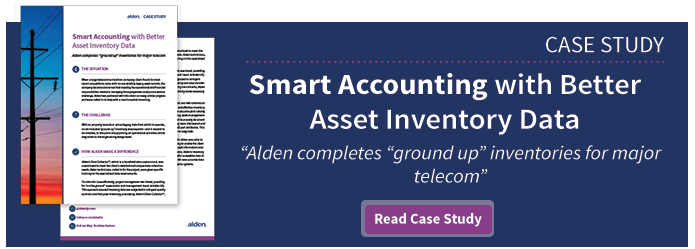Asset Inventory: Take Control to Avoid Negative Consequences
 Conducting regular, successful asset inventories is as vital a business function as providing quality service to your customers. As we have mentioned before, your assets are your livelihood, and if you do not know what you have or the value of what you have, you can be losing money and hurting operational efficiency. We have even offered a 101 course with tips on how to conduct successful inventory management.
Conducting regular, successful asset inventories is as vital a business function as providing quality service to your customers. As we have mentioned before, your assets are your livelihood, and if you do not know what you have or the value of what you have, you can be losing money and hurting operational efficiency. We have even offered a 101 course with tips on how to conduct successful inventory management.
However, if you need more proof regarding why this activity is such an important one, we have also compiled a list of four ways not having control of your inventory management cycle can lead to negative consequences.
1. Avoid buying excess through asset redeployment
Consider a thorough inventory as a cost-saving measure. Hidden somewhere in a warehouse—or in most cases, multiple warehouses—is vital equipment you need to do business. If you do not know how many specific critical items you have, you may be potentially overbuying, when simply redeploying assets you already own would suffice. Inventorying spare equipment can save cash, and potential headaches.
2. Unretired equipment can increase your tax bill
In most cases, businesses are required to pay ad valorem tax on equipment. The more assets you own, the more you can be required to pay. Taking stock of each and every asset gives you an accurate picture of not only what is available for use but also what can be retired. Not knowing the correct tally could result in underpayment and penalties, or overpayment. The added layer of valuation during inventory can also have a monetary impact on businesses. The amount of ad valorem tax is based on an item’s worth. Taking stock of each item’s real value can impact tax implications—and your payment.
3. Wasted space is wasted potential
With so much equipment building up over so many years, it is likely that some of it is now unusable and outdated as technology has changed. Paying taxes on unused or unusable equipment is not a good financial decision, and keeping these items in the warehouse takes up usable space. In some cases, inventory experts have even found so much excess “stuff” during routine inventories that whole buildings could be cleared and sold, creating a new profit center. Simply taking a good, hard look at what assets are in your possession, what you actually need and what can be disposed of, donated or sold can mean a lot to a business’s bank account.
4. Avoid service interruptions
A thorough inventory combats disorganization. Disorganization creates situations that you want to avoid, such as not being able to find much needed items one believes to be in inventory. Being unable to perform a task critical to service or make repairs simply because an item is not on hand—or worse, not where it should be—is a mistake that is easily avoided, and easily corrected, by good inventory process.
Just like maintenance, bookkeeping and employee training, regular asset inventory should be a mission-critical task for all businesses. Your company’s stock of important equipment, technologies and general “stuff” is as valuable as the service you offer your customers. Take stock. Get organized. And make the most of the assets you have.
